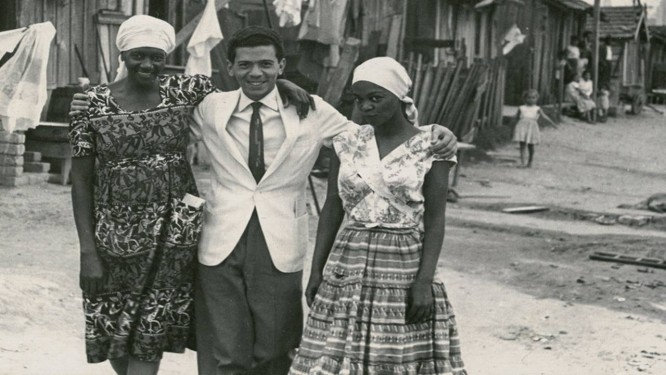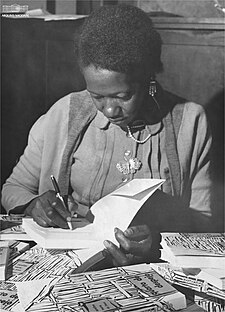Carolina Maria de Jesus was an Afro-Brazilian woman who not only defied the odds but also used the power of telling one’s story to change the lives of others and also change her own life.
Today, she is celebrated as Brazil’s most outstanding writer who despite being poor and black managed to make history as the author of the best selling book in the country’s history. The accomplishment did not come easily to her and also came at a cost.
Carolina was the illegitimate child of a single mother who had an affair with a married man. Born in 1914 on March 14 into a poor home, her mother supported her family by working as a sharecropper in Minas Gerais where Carolina and her other siblings who also had different fathers grew up as outcasts and lonely children.
For one, her mother was exiled from the Catholic church for having affairs with married men. Secondly, because her family was so poor, Carolina could not make friends as much as she might have wanted to.
In 1921, Carolina started school after a wealthy landowner’s wife opted to pay for her education. However, she would stop two years later on the basis that her mother forced her to do so. She spent her time reading and helping her mother despite her mother’s displeasure of her decision to stop school.

Carolina Maria de Jesus at a book signing in 1960
Several accounts that source from her book narrates that after the death of her mother in 1937 when she was only 23 years old, Carolina moved to Sáo Paulo to make a living for herself and soon got a job as a domestic servant which she did until she got pregnant with her first of three children. With the little money she had, she moved to a slum (known as favelas in Brazil) in Sáo Paulo and built her own house from empty cans, plywood and cardboard and made a meagre living by collecting cans, used paper and cardboard which she then sold to survive. It was through this that Carolina started to write her diary.
Due to the little education that she received and the ability to read and write which was in itself a rare privilege for Afro-Brazilians, Carolina did not mingle well with the people that lived in the favela. She had affairs with white men and would always seclude herself writing on the cardboard and paper that could not be sold.

In her diary, she wrote about her personal struggles with poverty and the life she wanted for her children and also wrote about several happenings in her community while writing the real names of people as well.
She often got into several arguments with the people who did not feel comfortable with her constant writing and uptight personality and it was during one such argument in 1958 that she was discovered by journalist Audalio Dantas while on duty covering a story. He overheard her publicly threatening to write about the person she was arguing with.

Audalio and Carolina soon became very good friends and the journalist would visit her in her home to have a look at her diary entries which he found very fascinating.
Through

For Carolina and her three children, the escape from the slum was a relief. The family moved into a huge brick house in the elite parts of Sáo Paulo and lived comfortably, however, they were not accepted into the rich society due to their history of coming from the slum. The family was also attacked by people from the slum who appeared in her book. There was also the argument that she did not write her books.

Carolina’s book would go on to be translated into more than 13 languages and become a global bestseller making waves in North America and Europe. But her other books did not do so well because she was not accepted into any social group and did not gain the support of the people. Despite being noted as the representative of the reality of blacks in Brazil, Carolina would not become as famous a writer as she hoped to be.
Unfortunately, her riches were short-lived and she would move back to the slum where she died on February 13, 1977. In 1999, the real manuscripts of her diary were found and published ending the dispute about her authenticity.
Carolina Maria de Jesus was definitely not a writer of her time, reason why she is only now being uplifted and celebrated for her rare documentation of life as a poor black Brazilian born and raised in the slum.










